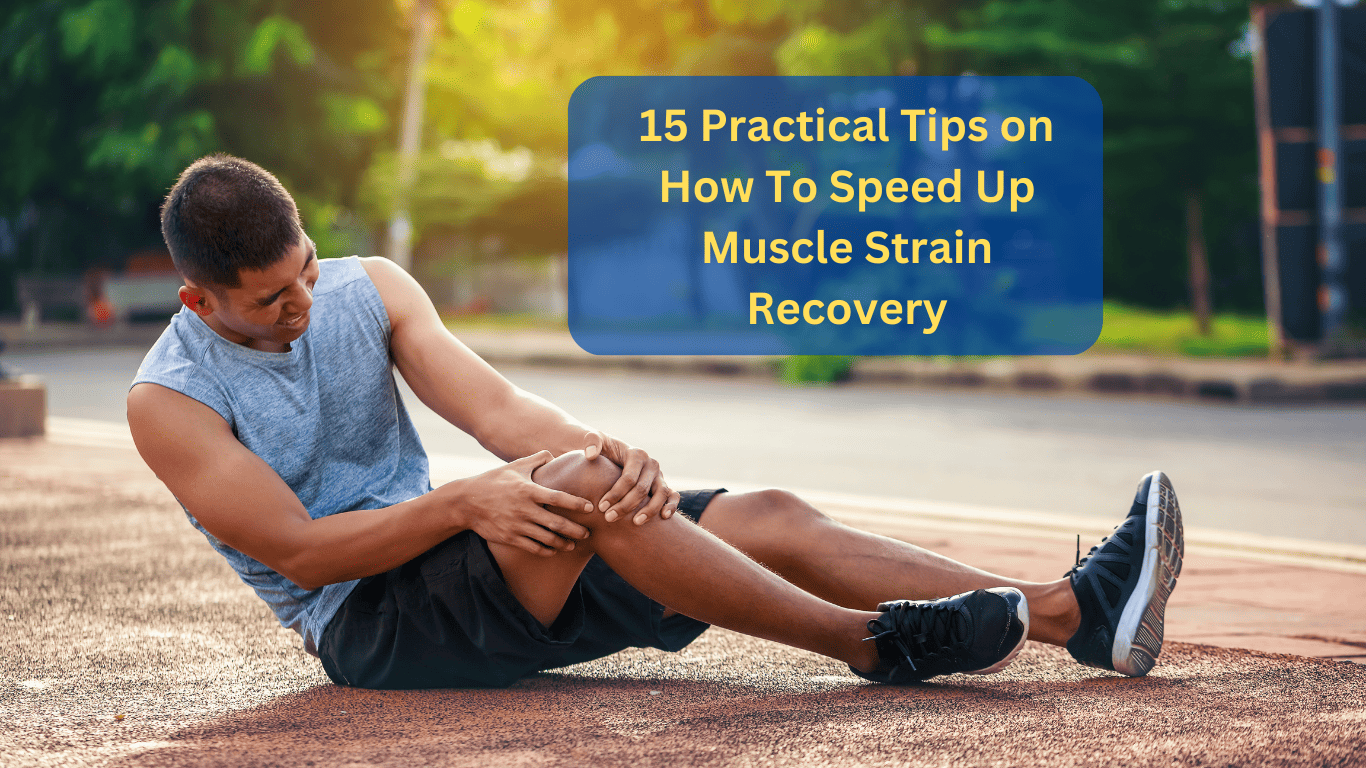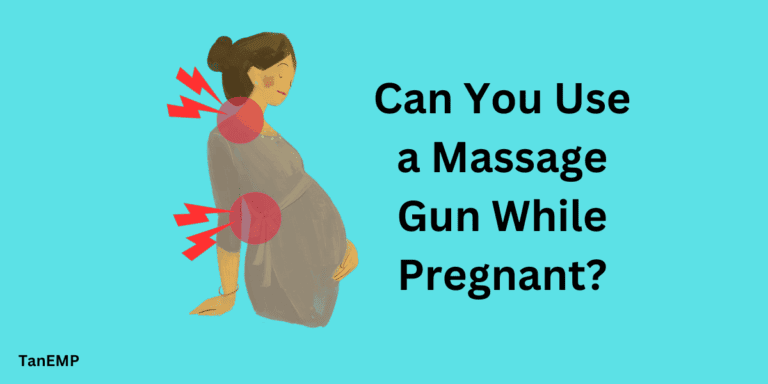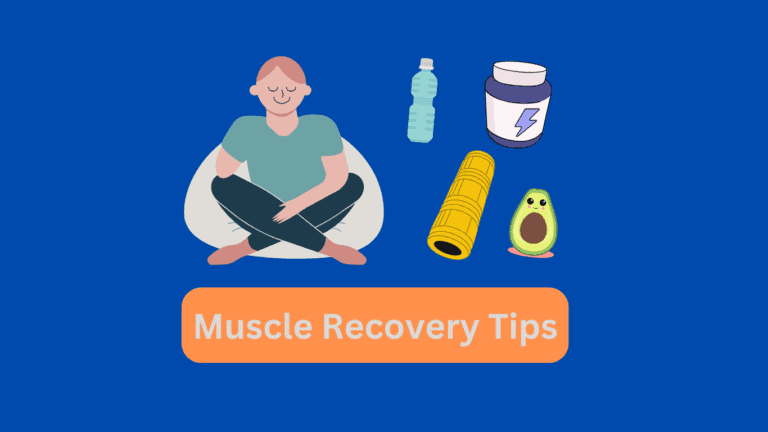15 Practical Tips on How to Speed Up Muscle Strain Recovery

As athletes, fitness enthusiasts, or anyone who makes physical activity a part of their routine, muscle strain is bound to happen.
And let’s face it, it’s not a pleasant experience. Sitting on the couch with an injured muscle is frustrating, time-consuming, and painful.
But what if I told you there was a way to speed up muscle strain recovery?
By implementing the right strategies, you can reduce your downtime and start feeling like your usual active self again.
In this post, I’ll share with you 15 practical tips on how to speed up muscle strain recovery.
From proper nutrition to the importance of blood flow for healing an injured muscle, I’ll provide you with everything you need to know to get back on your feet as quickly and safely as possible.
So, let’s dive in and explore the world of muscle strain recovery together, shall we?
What is a Pulled Muscle?
A pulled muscle is a general term used to describe a muscle or tendon injury that occurs when the muscle is stretched beyond its capacity.
It can result from a sudden movement or pull, excessive force during exercise, poor form while performing an exercise, and even inadequate warm-up prior to a workout.
Difference Between Sprains vs Strains?
Sprains and strains are two common injuries to the soft tissue of the body, most commonly involving ligaments and muscles.
Sprains occur when ligaments, which connect bones together, are overstretched or torn.
Strains occur when muscles or tendons are stretched too far and become inflamed or torn.
To help prevent sprains and strains, it’s important to warm up with stretching before physical activity, take breaks as needed
What Are the Symptoms of Muscle Strain?
Symptoms of sprains and strains include pain, swelling, bruising, unable to bear weight, and reduced range of motion at the injured site.
Both sprains and strains can be treated with rest, ice, compression, and elevation.
Ultimately, the key difference between sprains and strains is that a sprain affects ligaments, while a strain affects muscles or tendons.
Ligament injuries take longer to heal compared to muscle and tendon injuries because they receive less blood supply.
Additionally, physical therapy or surgery may be necessary depending on the severity of the injury.
What Is the Grade of Muscle Strains Injury?
Not all muscle injuries are the same. Depending on the type of damage, the recovery process may vary.
Muscle strains are classified into four grades based on research by the British Journal of Sports Medicine, and the treatment recommended will depend on the extent of the muscle damage.
The three Grades of Muscle Strains:
• Grade I Muscle Strain (Mild Strain) – The muscle injury is mild and results in slight discomfort, mild swelling, and some tenderness in the affected muscle area.
• Grade II Muscle Strain (Moderate Strain) – This is a Grade II muscle strain injury that causes localized pain, pain during movement, and a moderate decrease in range of motion. Grade II strains are caused by overstretching of the muscle fibers without tearing them.
• Grade III Muscle Strain (Severe Strain) – Muscle tissue damage is quite serious and includes partially torn muscle fibers. This has caused tenderness in the affected area, a moderate decrease in range of motion, and some level of disability. Surgery may be necessary as a treatment option.
• Grade IV Muscle Strain – This is the most severe type of muscle strain, where the muscle fiber is completely torn. It results in complete disability of muscle function, as well as severe swelling and bruising. You may also notice a visible dimple on the muscle.
What are the 4 stages of Muscle Healing?
Please keep in mind that the time it takes for a muscle injury to heal can differ depending on the severity of the strain and individual factors. Thomas Laumonier and Jacques Menetrey have conducted thorough research on the healing process of muscle injuries.
It is important to seek medical advice if you are experiencing any symptoms of muscle strain. A doctor will be able to provide treatment and advice on how to properly heal and rehabilitate the injury.
The healing process of a muscle strain can be divided into four stages:
• Degeneration/Inflammatory Phase – This is the first stage, where the body tries to reduce swelling and pain.
• Repair Phase – During this phase, new blood vessels begin to form and scar tissue is laid down.
• Regeneration Phase – During this phase, the muscle begins to rebuild itself and new tissue is formed.
• Remodeling Phase – During this phase, the muscle continues to undergo strengthening and repair until it fully recovers to its original state. Scar tissue formation is also a part of this process.
It is also important to note that proper rest and rehabilitation are essential for healing muscle strain. Resting the strained muscle, using ice, and engaging in light exercise can help with the healing process. Additionally, stretching and strengthening the muscle after it has healed can help to prevent future injuries.
How To Prevent Muscle Injury?
Preventing muscle injuries is important to ensure that you stay healthy and able to play your favorite sports or activities. There are several steps that can be taken to reduce the risk of muscle injury.
• Warm up – Before engaging in any physical activity, it is important to properly warm up the body. This helps to increase blood flow, flexibility, and range of motion in order to reduce the risk of injury.
• Proper form – In order to decrease the chance of getting injured, it’s important to use appropriate form and technique. Developing muscle memory for the activity can also help reduce the risk of injury. Be sure to maintain correct posture and use proper form while participating in physical activities.
• Stretching – Regular stretching can help to improve flexibility and reduce the risk of muscle injury.
• Listen to your body – Listen to your body and cease exercising if you experience discomfort or pain since your body is your ally. Discomfort or pain during workouts indicates that your body is signaling that something is not right. If the pain persists or gets worse, seek advice from your doctor.
• Wear proper gear – Wearing the proper protective gear can help to reduce the risk of injury. This is especially important for contact sports such as football or rugby.
• Proper rest – Make sure to get adequate rest between workouts and activities in order to allow your muscles time to recover. Excessive stress or fatigue can increase the risk of muscle injury.
• Nutrition – Eating a balanced diet and staying hydrated can help to promote muscle health and reduce the risk of injury.
• Strength training – Regular strength training can help to build muscle and reduce the risk of muscle injuries.
By following these steps, you can help to reduce the risk of muscle injury and stay healthy and active. If you experience any pain or discomfort during physical activities, make sure to take a break and consult a doctor.
15 Practical Tips for Muscle Recovery
1. Rest the Strained Muscle
When you have a muscle strain, your body needs time and energy to heal. It is important to rest properly and avoid intense physical activity for a few days to a week, depending on the severity of your injury.
2. Remember to Ice the Injured Muscle

When you strain your muscles, you might notice swelling in a particular area. To reduce inflammation and alleviate pain, it is essential to put ice on the affected area for 5-10 minutes immediately. Avoid putting the ice directly on your skin to avoid getting ice burns.
3. Apply Compression on the Injured Area
To stabilize the muscles, reduce swelling, and prevent further damage, it’s recommended to wrap a bandage around the injury.
4. Elevate the strained Muscle
To further reduce swelling, it’s important to keep the affected area elevated above your heart level whenever possible.
5. Anti-Inlammatories
To relieve pain and inflammation caused by muscle strain, you can use over-the-counter anti-inflammatory drugs like ibuprofen or naproxen. Remember to follow the instructions and consult with your primary care provider before taking these medications.
6. Seek Medical Profession for Assessment and Treatment
To better understand your injury and improve muscle recovery time, it’s recommended to consult with a medical professional such as your primary care provider, physical therapist, or chiropractor for assessment.
Starting treatment early can speed up muscle recovery. One effective way to improve recovery is through electrotherapeutic modalities. Examples of these modalities include transcutaneous electrical nerve stimulation (TENS), Interferential Current (IFC), Ultrasound, and Infrared laser.
7. Avoid Re-Injury
It’s important to avoid physical activities that may cause further damage to the injured area until it is fully healed. Make sure to listen to your body and stop any activity that causes sharp pain.
8. Soft Tissue Massage

Massaging the muscles can enhance blood circulation and alleviate muscle pain. However, be cautious when massaging a damaged area and start gently. You may also consider using massage tools like theragun to aid the process.
9. Stay Hydrated
Proper hydration is crucial for recovering from injuries. Drinking water helps to eliminate toxins released during muscle recovery, maintains our body temperature and pH balance, and reduces soreness after physical therapy, rehab exercises, and massages.
10. Try Acupuncture
Acupuncture has been found to be an effective treatment for reducing pain associated with muscle strains.
11. Sleep
Getting sleep is important for muscle recovery. If you don’t get enough sleep, it can delay the recovery process.
12. Heat Treatment
Using heat is beneficial for relieving muscle pain and soreness. It is advised to apply heat therapy only after the muscle swelling has subsided. The heat helps to enhance blood circulation, which in turn provides vital nutrients to the injured muscle.
13. Stretching
Stretching is beneficial for improving blood flow, reducing muscle tightness, and preventing injuries. However, it is important to avoid stretching too early after a muscle injury as this can further damage the affected area.
Additionally, ensure that you experience no pain while stretching. A proper warm-up and stretching routine before exercising can also help prevent injuries.
14. Healthy Food
Feeding your body with healthy food will help it recover from muscle injuries faster. Eating a balanced diet with plenty of fruits, vegetables, lean proteins, and healthy fats can provide your body the nutrition it needs for proper recovery.
Additionally, foods that contain omega-3 fatty acids, like salmon and walnuts, can help reduce inflammation.
15. Low Impact Exercise with a Physical Therapist
The last step of the recovery process is to perform exercises that are tailored to your injury. A physical therapist can provide you with a personalized exercise program that will help you strengthen, stretch, and restore the injured muscle.
Conclusion
By following these steps, you can reduce pain caused by muscle strain and improve muscle recovery time. It’s important to remember that each injury is unique, so it’s best to consult with a medical professional for assessment and treatment. With proper care and rehabilitation, you can help prevent future muscle strains and get back to your active lifestyle.
Disclaimer: The information provided in this blog post is for educational and informational purposes only and should not be construed as medical advice or a substitute for professional medical guidance, diagnosis, or treatment. Always consult with a qualified healthcare professional before starting any exercise program or making changes to your current routine. The author and publisher of this blog post are not responsible for any adverse effects, injuries, or consequences resulting from the use or misuse of the information provided. The reader assumes full responsibility for any actions taken based on the information presented in this blog post.
FAQ
How long can it take for a strained muscle to heal?
The amount of time it takes for a strained muscle to heal depends on the severity of the injury. Generally, mild injuries will take around 2-3 weeks to heal, while more serious injuries can take up to several months. It’s important to seek medical attention and follow an individualized recovery plan to ensure full and successful healing.
What are the most common causes of muscle strain?
The most common causes of muscle strain are overuse, repetitive motions, and sudden impacts. In addition, not warming up or stretching prior to physical activity can contribute to the likelihood of muscle strain. Proper preparation and taking breaks during physical activities can help reduce the risk of muscle strain.
What Is the Cause of Muscle Injury?
Muscle injuries are often caused by factors such as inadequate warm-up, overtraining, excessively tight muscles, inadequate rest periods, dehydration, lack of rest, and poor diet.
What Helps Muscle Strain Heal Faster?
Resting the strained muscle and taking NSAIDs if needed is important for faster healing. It is also helpful to apply heat to the affected area and perform mild stretches to improve blood flow and decrease muscle tension.





